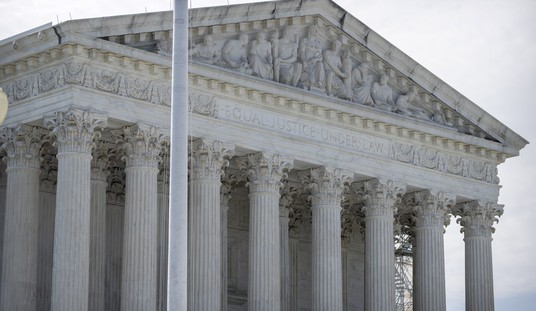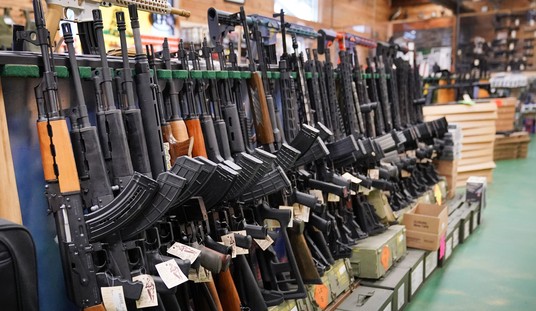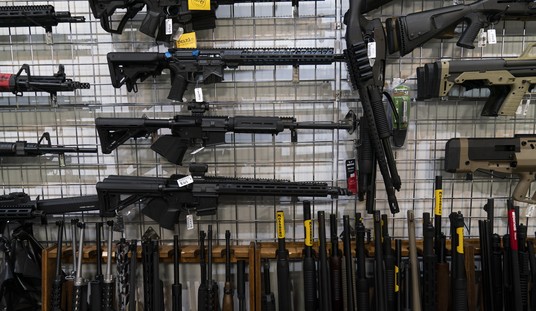The Department of Justice's defense of the law prohibiting "unlawful" users of drugs rests largely on two supposed historical analogues that support Section 922(g)(3); laws "restricting the rights of habitual drunkards" and 18th century surety laws that required individuals deemed to pose a particular danger to post a bond before they could exercise their right to bear arms.
Those surety laws have been cited in defense of any number of gun control laws, but I don't think they're particularly relevant here. Section 922(g)(3) doesn't involve any individualized finding of dangerousness, nor does it impose a financial cost to exercising our Second Amendment rights. It's an outright prohibition on gun possession for anyone and everyone who "is an unlawful user of drugs," even while exempting those lawful users who've been prescribed powerful narcotics by their physicians.
If those same surety laws didn't suffice as an analogue to "may issue" concealed carry laws, I don't wee how they could be seen as supportive of the law at the heart of U.S. v. Hemani. Laws, especially those at the time of the Founding, that deal with alcohol and "drunkards," however, probably are analogous to modern statutes dealing with illegal drug use.. or at least much closer to a match.
The problem for the DOJ, though, is that it's abundantly clear that drinking, even habitually, was no bar to gun ownership at the time of the Founding. As the Fifth Circuit pointed out in its decision:
Section 922(g)(3) is much broader than historical intoxication laws. These laws may address a comparable problem–preventing intoxicated individuals from carrying weapons–but they do not impose a comparable burden on the right holder.”
The Fifth Circuit held that historical regulations probably support bans on gun possession while actively intoxicated, but the federal law in question bans possession "for an undefined set of‘user[s]’ even while they are not intoxicated.”
In their reply to the government's cert petition, Hemani's attorneys argued that the government is using historical analogies that have little or nothing to do with the treatment of "habitual drunkards," while claiming they're relevant to the issue at hand.
Petitioner asserts three types of historical laws in support of its position that history and tradition support the constitutionality of § 922(g)(3) as applied to Mr. Hemani: vagrancy laws, civil-commitment laws, and surety laws. Each of these categories, according to Petitioner, constitute founding-era laws restricting the rights of drunkards.
Petitioner first argues that vagrancy laws of the 18th century classified “common drunkards” as “vagrants” which subjected them to imprisonment or confinement in “workhouses.” However, Petitioner cites to no case, law, or statute from the founding era that disarms habitual drunkards or vagrants. Instead, Petitioner notes that habitual drunkards have been found incompetent to do business, or that habitual drunkards could be committed or placed under guardianship. Notably, Petitioner’s discussion on vagrancy lacks any nexus to fundamental rights of possession or carrying of firearms for “vagrants."
Which raises an interesting question: does the Department of Justice believe that vagrants in 2025 possess the right to keep and bear arms? What about retirees who tour the country in a tricked-out RV, but don't have a fixed address?
That's another issue for another time, thankfully. Let's get back to Hemani's arguments against the government's "surety" law and civil commitment analogues.
Surety laws combined with “going armed” laws addressed the why and how on restrictions under 18 U.S.C. § 922(g)(8): “When an individual poses a clear threat of physical violence to another, the threatening individual may be disarmed.” Rahimi, at 698. However, surety laws miss both the why and how of the restrictions imposed by § 922(g)(3).
This Court was clear in Rahimi that surety, going armed laws, and § 922(g)(8)(C)(i) “applies to individuals found to threaten the physical safety of another.” Moreover, this Court noted that Section 922(g)(8) applies “only once a court has found that the defendant 'represents a credible threat to the physical safety of another.” Further,§ 922(g)(8)’s restriction is temporary and only applies while the defendant is subject to a restraining order.
Section 922(g)(3) differs greatly from the surety laws discussed in Rahimi and Section 922(g)(8), and this Court recognized the danger of the Petitioner’s argument in Rahimi: The burden Section 922(g)(8) imposes on the right to bear arms also fits within our regulatory tradition. While we do not suggest that the Second Amendment prohibits the enactment of laws banning the possession of guns by categories of persons thought by a legislature to present a special danger of misuse. . . we note that Section 922(g)(8) applies only once a court has found that the defendant “represents a credible threat to the physical safety” of another.
Yet, this is precisely what Petitioner argues: that drug users are a class of people categorically prohibited from possessing firearms under 18 U.S.C. § 922(g)(3). And that prohibition should apply without any court processor procedure. Perhaps more concerning is Petitioner’s inverted view on due process. This Court found surety and going armed laws historical precursors to § 922(g)(8) because they each required a finding by a judge that the individual represented a danger to the safety of others. Petitioner argues that § 922(g)(3)–which requires no prerequisite finding of an individual being a credible threat to the safety of others–somehow creates greater due process because a person accused of violating § 922(g)(3) “has a right to a full criminal trial[.]” Petitioner clearly misses the mark. Under § 922(g)(8), an individual’s Second Amendment rights are not restricted until a judge makes a finding of a credible threat to the safety of others. If the person under a restraining order possesses a firearm afterwards, he too is entitled to a full criminal trial. Under § 922(g)(3), there is no requirement that prior to prosecution that the individual be found by a court to be a “unlawful user” or“addict.” Under Section 922(g)(3), a user or addict of controlled substances is stripped of his fundamental Second Amendment rights without judicial proceedings.
Like I said, I don't think surety laws are a good fit here, and Hemani's attorneys lay out a succinct argument as to why that's the case; in general and specifically why they have little bearing on the treatment of "drunkards" at the time of the Founding.
Hemani's legal team even brought up a common sense observation by the Fifth Circuit that, despite lacking any sort of legal or historical citation, fundamentally undermines the government's position.
Considering the ‘extremely high level of alcohol consumption in the early Republic, this handful of generally inapposite laws does little to help the government’s position. The government fails to identify any relevant Founding-era tradition or regulation disarming ordinary citizens who consumed alcohol.
Alcohol use in 1791 was far more common than drug or alcohol use today. The average American in 1770 drank more than three gallons a year, which is about double today's rate of consumption. Whiskey was so ubiquitous at the time of the Founding that a tax on distilled spirits generated outrage throughout the states and even sparked the Whiskey Rebellion in western Pennsylvania.
Cider and beer were even more prevalent than spirits, and yet, as the Fifth Circuit notes, the government presented no evidence whatsoever that the Founders sought to disarm ordinary citizens just for drinking alcohol. Laws that forbade intoxicated persons from buying or carrying guns, yes, but not a single statute that specifically barred alcohol abusers from possessing firearms even while sober.
Now, this doesn't mean that the Supreme Court is going to accept the Fifth Circuit's position, which would lead to Section 922(g)(3) being null and void unless federal prosecutors can demonstrate that a defendant was actively under the influence while they possessed a gun. But given the widespread use of marijuana across the country (the CDC estimates 52 million people used cannabis at least once in 2021), it's hard to argue with a straight face that every unlawful users of drugs poses a danger to society and must be disarmed.
If the Supreme Court does accept surety laws as an apt analogy, it will most likely be used in support of a position that only those who've individually be found to pose a particular danger to themselves or others can be disarmed under Section 922(g)(3). That's the position the Eighth Circuit has taken, and as I wrote yesterday, I believe some justices may have already signaled that SCOTUS is on board with that approach.









